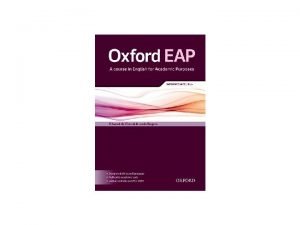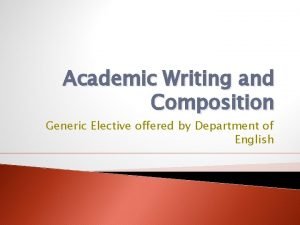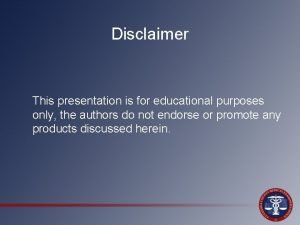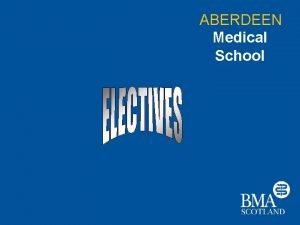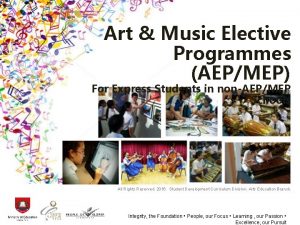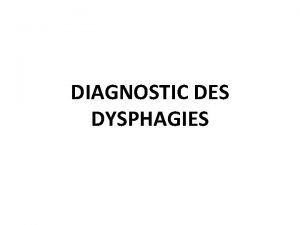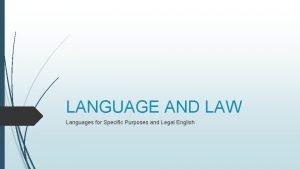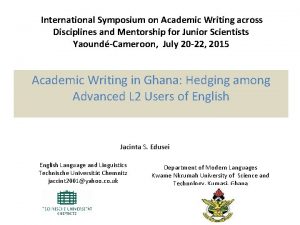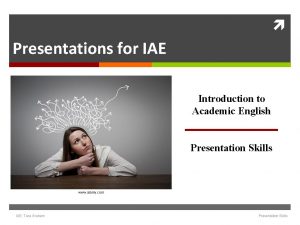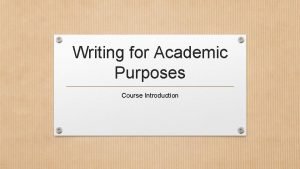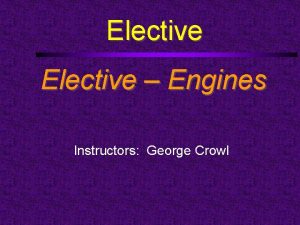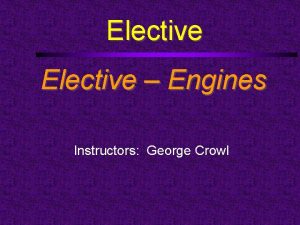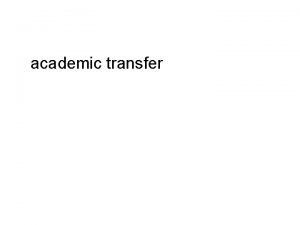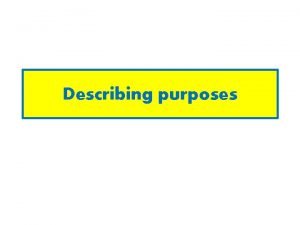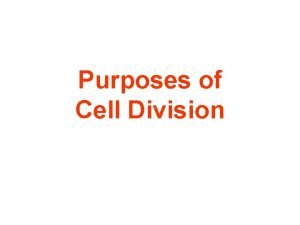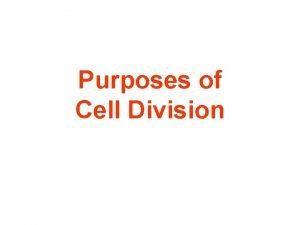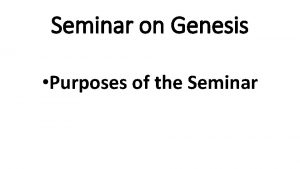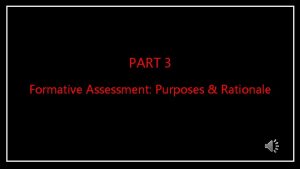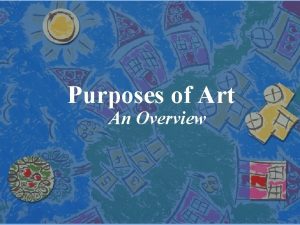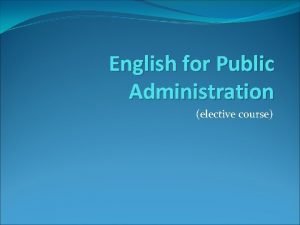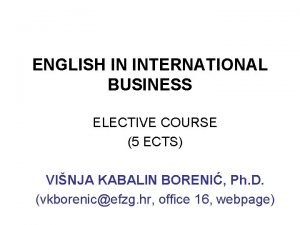ENGLISH FOR ACADEMIC PURPOSES Elective course English for






















- Slides: 22

ENGLISH FOR ACADEMIC PURPOSES Elective course

English for Academic Purposes Lecturer: Dr. sc. Marijana Javornik Čubrić Sessions: Monday 4 -8 p. m. Office hours: Tuesday 10: 00 -11: 00, Gundulićeva 10, room no. 6 Contact: marijana. javornik@pravo. hr

Literature R. R. Jordan, Academic Writing Course - Study Skills in English, Longman, Essex, 2004 (8 th impression) Units 1, 2, 4 -8, 10 -15

Presentations Available at www. pravo. hr/sj Courses: English for Social Work III Teaching materials

Topics Introduction to English for Academic Purposes Structure and Cohesion – Connectives and Paragraphs Description: Process and Procedure - The Stages of Writing an Essay Narrative – The Development of Universities Definitions (simple, academic and extended definitions) Exemplification – What is Language? Classification – State Schools in England Wales Comparison and Contrast Generalisation, Qualification and Caution – A Survey of Unemployment Interpretation of Data – Charts, Graphs, Diagrams and Tables Discussion – "For" and "Against" Introductions and Conclusions – Concluding from Tables Academic Style – Informal and Formal; What is education? Paraphrasing and Summarising

Sessions March 6 March 13 March 20 March 27 April 10 April 24

Session 1 – March 6 Introduction to English for Academic Purposes Structure and Cohesion – Connectives and Paragraphs Description: Process and Procedure – The Stages of Writing an Essay Academic writing

Session 2 – March 13 Narrative – The Development of Universities Definitions (simple, academic and extended) Exemplification – What is Language?

Session 3 – March 20 Classification – State Schools in England Wales Comparison and Contrast Generalisation, Qualification and Caution – A Survey of Unemployment Interpretation of Data – Charts, Graphs, Diagrams and Tables

Session 4 – March 27 1 st written assignment (interpretation of data) Discussion – «For» and «Against» Introductions and Conclusions Paraphrasing and Summarising

Session 5 – April 10 Academic Style – Informal and Formal What is education? 2 nd written assignment (summary)

Session 6 – April 24 Revision Analysis of papers Signatures

Aims of the course To enable students to express themselves coherently in writing To provide samples of academic writing and practice material for students who need to write reports or essays in English

Examination Three pieces of academic writing (two written in class, one as an assignment) 1. Interpretation of data 2. Summary 3. Essay (home assignment)

Introduction to academic writing Writing involves starting, progressing and finishing a complicated combination of tasks Writing is not just influenced by what we know and what we have discovered about something, but also by what we feel Creative part of writing requires chaos; shaping or writing requires discipline

The paradoxes of academic writing 1. 2. 3. 4. 5. The starting v. finishing The originality v. convention The logic v. emotion The easy v. difficult The public v. private

1. Starting v. finishing Skills associated with starting a writing project are different from the skills you need to activate to complete it Projects we start, but do not finish – enthusiasm in the beginning, criticism and fears later

2. Originality v. convention The differences between taking in information and putting forward or articulating ideas of your own How can fresh ideas be incorporated into a writing style that tends to demand conformity? Listen to voices of others, but write in your own

3. Logic v. emotion Academic writers have to be objective, but it is impossible to ignore the emotional dimension Emotional dimension is needed to be self-aware and reflective in what you write

4. Easy v. difficult Writing can seem both easy and difficult at different stages in the process, or at the same time Realisation that doing something with ease does not mean that it is simple or unchallenging

5. Public v. private Privacy protects early writing efforts, but scholarship in general requires public scrutiny A need to balance the public and private dimension of academic writing

Thank you for your attention!
 Oxford eap a course in english for academic purposes
Oxford eap a course in english for academic purposes Generic elective academic writing and composition
Generic elective academic writing and composition What is esp english for specific purposes
What is esp english for specific purposes Disclaimer educational purposes
Disclaimer educational purposes Aberdeen electives
Aberdeen electives Ano ang panimula sa sanaysay
Ano ang panimula sa sanaysay Art elective programme
Art elective programme College preparatory elective examples
College preparatory elective examples Elective ict
Elective ict Eogd examen
Eogd examen Microsoft official academic course
Microsoft official academic course Microsoft official academic course microsoft word 2016
Microsoft official academic course microsoft word 2016 Microsoft official academic course microsoft excel 2016
Microsoft official academic course microsoft excel 2016 Microsoft official academic course microsoft word 2016
Microsoft official academic course microsoft word 2016 Egp vs esp
Egp vs esp What is esp english for specific purposes
What is esp english for specific purposes Languages for specific purposes
Languages for specific purposes Half brick wall in stretcher bond report
Half brick wall in stretcher bond report Course title and course number
Course title and course number Chaine parallèle muscle
Chaine parallèle muscle Academic english reading and writing across the disciplines
Academic english reading and writing across the disciplines Academic english presentation
Academic english presentation Kontinuitetshantering i praktiken
Kontinuitetshantering i praktiken
